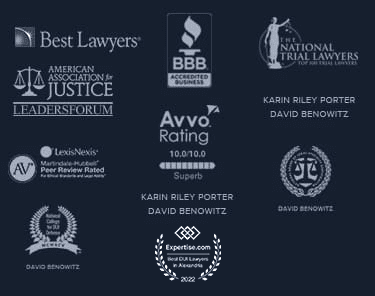
Speed Reading Instruments in Prince William Reckless Driving Cases
Generally speaking, there are three different ways that law enforcement officers track drivers speed. The following is information on these three methods and how they can be overcome in court. To learn more or begin building a defense for your case, call and schedule a consultation with a Prince William County reckless driving lawyer today.
Radar Devices
The first way that law enforcement will measure someone’s speed is through the use of Radar guns. The radar instruments used in Prince William County are very accurate so long as they have been properly calibrated. There are small differences which will show up in any radar device’s reading from reading to reading. However, most of these instruments are very sensitive, and if they are properly calibrated, will yield a correct result.
In court, if the radar device is properly introduced and proper calibrations have been done, it will likely be accepted and believed by the judge in virtually all cases.
Defenses Against Radar Guns
The primary defense against a radar gun reading is that the device has not been recently calibrated or that the officer has not been recently certified on the device. For a radar reading to be usable in Virginia courts, there must be evidence showing that the radar device was calibrated before and after the officer’s shift. In addition, there must be documentation proving that the device used to calibrate the radar device has been calibrated in the last 6 months. In addition to this, a police officer has to renew his or her certification on the device annually. If an officer does not have the current certificates of calibration or hasn’t completed his or her certifications and therefore doesn’t have these documents in court, the case will be dismissed in most instances.
LIDAR Devices
The next way that police most often catch drivers is through the use of a LIDAR gun. LIDAR is the newest kind of radar device used in the Commonwealth. In most cases, it is more accurate than traditional radar and it uses a more focused and smaller target beam than earlier radar devices. The primary issue with this device, which has been raised in some courts with success, is that the calibration is not actually done in the state of Virginia. Because of this, the person who does the calibration is not subject to appear in the Virginia court to explain the tests that were done.
Can These Devices Lock Onto The Wrong Object?
It is very unusual for interference to come up as an issue in LIDAR cases because police will select locations where there is unlikely to be any interference. As a result, this is not something that an attorney will frequently see. Drivers do often wonder whether a police officer has locked on to someone else’s vehicle in order to get the reading. And it’s true that if the reading is taken under circumstances where it is difficult to pick up the vehicle, such as a case in which the officer is relying on rearview radar and it is nighttime, which make it difficult to identify an individual vehicle, then it is possible to raise reasonable doubt in the mind of the court as to whether the vehicle that was measured was the same vehicle that was stopped. However, it is virtually unheard of for the police to acknowledge that they stopped the wrong vehicle. If an officer stops you, he or she believes that your vehicle was the one detected by the radar beam.
Pacing
Pacing is a speed detection technique that involves a police officer following a driver for some distance while maintaining a consistent distance from the driver. The officer then looks at the speedometer on his or her own vehicle and uses it as a basis for determining the speed of the offending vehicle.
Admissibility of Pacing
Pacing is a legal means of determining speed in Prince William County. The primary issue in pacing cases is the fact that the officer has to determine the speed at which he or she is driving while maintaining the same distance between his or her own vehicle and the vehicle that he or she is watching, all while trying to drive safely and maintain proper distance from other cars. Because there are so many things going on while this kind of reading is being taken, there is simply more opportunity for user error or for an officer to be mistaken about what he or she sees.
Pacing is the least common technique used in Prince William County. Most pacing cases will arise when a state trooper or other traffic officer is on patrol and notices that a driver ahead, who obviously doesn’t see the police officer, is traveling at a high speed. In those cases, an officer may accelerate before turning on the emergency equipment in an attempt to follow the driver and measure the speed. This type of stop probably accounts for 5% or less of the speeding cases in the Prince William County.
Common Speed Reading Instrument Myths in PWC
One common myth is that it is common for officers to have miscalibrated devices or fail to bring proper proof of calibration to court. In reality, in the vast majority of speeding cases involving radar, the officer does, in fact, have the proper proof of calibrations as well as proof of his or her own training. On the other hand, some believe that speed-reading instruments are never wrong and this is a myth as well.
The speed limit is the maximum speed that you are allowed to travel in your vehicle on a particular road. In Prince William County, VA, you are required to follow the speed limit in virtually all cases. There are some rare exceptions in which there is an emergency and a person’s life or limb is in danger that will excuse speeding. There are virtually no other excuses for exceeding the posted speed limit.
There are absolute speed limits on virtually on all of the roads in Prince William County, but the highest speed limit anywhere in the county is 70 miles per hour. If you are charged for speeding, it is important to contact a Prince William County traffic attorney right away to help defend your case as the consequences can be quite severe.
Evidence in Reckless Driving Cases
An officer will present evidence of your speed by testifying to the reading on his or her radar instruments at the time that you drove through the beam. In order to be able to do this under Virginia law, an officer has to calibrate his or her instruments before and after his or her shift. Furthermore, there must be documents proving that the device used to calibrate the radar was calibrated at least within the last 6 months.
If you don’t think that you were going as fast as the officer claims, it will be especially important that you do a speedometer calibration for your vehicle as this may account for the difference. If in the end, you believe that you were driving at a slower speed than the officer does, then the judge will have to decide whether he or she believes you or the officer. In most of these cases, the officer’s testimony will be given more weight unless the credibility of his or her statements can be undermined by your lawyer.
Do not send us confidential information related to you or your company until you speak with one of our attorneys and get authorization to send that information to us.
